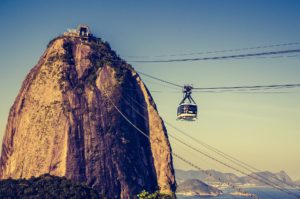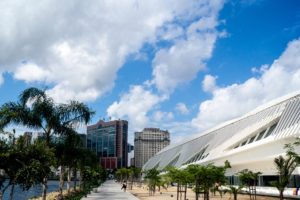Rio is always in our faculty lead programs. we prepare each trip with a lot of care and choose some of the most important places to take our students. We will share some places you can’t miss in the one of the greatest cities in the world: Rio.
Check it out:
Jardim Botânico (Botanical Gardens)
The Botanical garden might not be as famous as Rio’s beaches but this place is a totally must see. The 137 hectare garden designed by order of Prince Regent Dom João, has over 8000 plant species including over 600 species of orchids. There is a lovely outdoor snack bar on the grounds, inside the leafy gardens, perfect to enjoy a sandwich, coffee or wine. If you have the opportunity, spend the whole day there because this scenic park has a lot of worth-seeing things.
Pão de Açúcar (Sugarloaf Mountain)
A Rio’s postcard and one of the most famous mountains in the world, we don’t need to introduce it to you guys. Rising 396 meters, its name was given in the 16th century because it looks like the shape of a concentrated refined loaf sugar. The famous cable car (called “bondinho” or “teleférico” in Portuguese) gives 20 minutes of an amazing journey up to the Atlantic Ocean, white sand beaches, crashing waves, jungle alike mountains and many other panoramic views of the city. The Sugarloaf, Morro da Babilônia (Babylon Mountain), and Morro da Urca (Urca’s Mountain) together form he largest urban climbing areas in the world.

Cristo Redentor (Christ the Redeemer)
Christ the Redeemer is one of the 7 wonders and it can be spotted from almost anywhere in the city. This giant statue reaches 32 meters into the sky and sits just by the top of the Corcovado Mountain in the Tijuca Forest National Park of Brazil. It was created by the French-Polish Sculptor, Paul Landowski and built by the Brazilian engineer Heitor Silva da Costa. The money used for the construction was all by the catholic community in Brazil, which is the largest in the world. Until not long ago, to reach the statue, you would need to climb 220 steps but nowadays a flight of escalators also allows you to get to the viewing area.
Estádio do Maracanã (Maracanã Stadium)
There is no doubt that Maracanã (pronounced as “mah-rah-kuh-nuh”) it’s the world’s most famous stadium and, although it’s not the largest one in the world its +80.000 capacity is very impressive. The official name of the stadium is Estadio Jornalista Mario Filho but Macaranã became more popular because that’s the name of the neighborhood where it is located. Since March 1st the stadium started its exclusive period for preparation and holding of the Olympic & Paralympic Games Rio 2016 and the Maracanã Tour, matches, events and other activities are suspended until the return of the stadium, scheduled for October 30, 2016.
Parque Nacional da Tijuca ( Tijuca National Park)
This is the largest strech of human jungle in the world, it’s the home of Corcovado and Christ statue, covering a huge area of mostly mountainous landscapes. We recommend you to enter the jungle with a guide because it’s really easy to get lost over there. Natural pools and waterfalls provide an opportunity to cool down, but be sure to bring plenty of drinking water.

Museu do Amanhã (Museum of Tomorrow)
Built inside an old pier house, the Tomorrow Museum aims to be as well as an art and science institution but also to exhibit damages of climate change. The building adapts to different climate conditions and it’s main exhibition priors ideas over objects. The Museu do Amanhã has partnership with renowned Brazilian universities, that contributes to the most varied themes.

